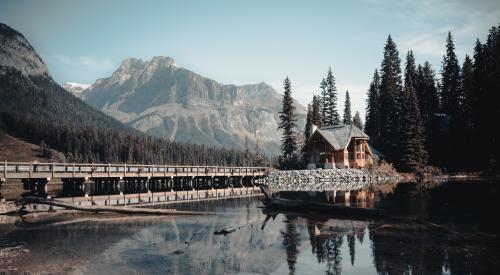Virginia County Hones New Rainwater Harvesting Standard
Fairfax County, Va., recently grappled with permitting its first project that makes use of rainwater harvesting. The county’s new sustainability requirements prompted the developer of a three-block project to propose inclusion of rainwater harvesting. But, the system was not covered in the county’s 2012 codes that laid the basis for the newest sustainability requirements.
A county code official researched the matter and discovered that the American National Standards Institute (ANSI) had just approved a new standard—CSA B805-18/ICC 805-2018 Rainwater Harvesting Systems Standard. It was designed to help code officials to develop guidelines that work with existing building codes.
An official with the International Codes Council believes that as the new standard becomes better known, a lot more rainwater harvesting projects will be undertaken.
Climate Change Can’t be Stabilized Without Addressing Urban Sprawl
Transportation accounts for more than a quarter of U.S. carbon emissions, making it the largest source of U.S. carbon emissions. This sector surpassed power generation in 2017 as the top emitter. Urban sprawl, and the transportation challenges it presents, is one of the reasons for this development. Some argue that climate change can’t be mitigated without addressing this issue—even if power generation goes completely green.
The U.S. House of Representatives’ Committee on Transportation and Infrastructure recently addressed this issue and raised some solutions. Among them was the need to view infrastructure and climate change as linked issues, not separate ones.
Though no consensus emerged from the deliberations, one view was that low-carbon and storm-resilient transportation systems including public transit should be priorities. Also, climate resiliency should include natural solutions such as restored wetlands.
Death Toll From Recent Alabama Tornados Highlights Lack of Shelter in Poor Areas
With warning, people can survive most tornados. That raises the question of why 23 people perished from a recent tornado outbreak in Alabama. The answer may be poverty.
The most damaging tornado tore through Lee County, destroying rural homes and businesses. In Lee County, 19% of residents live below the poverty line, and 17% of houses are mobile homes, nearly three times the national average. With no basement, many residents had no place to go for shelter.
Accessory Apartments Could be Easy Way to Boost Housing Supply in D.C. Area
Accessory dwelling units or ADUs, including English basements, studio garages, mother-in-law units, and carriage houses, could help alleviate the housing shortage in the Washington, D.C. area. These homes appeal to many types of individuals and “require only incremental change to existing urban form and neighborhood character,” according to a post at ggwash.org.
“In a regional market where housing in highly accessible locations can be extraordinarily expensive, accessory apartments are a meaningful option to increase supply,” it says. A survey of some of the region’s communities revealed a number of zoning restrictions on ADUs. As a result, there are only 133 licensed accessory apartments in populous Montgomery County.
Homeowners Looking for Tesla Powerwalls Often Can’t Get Them from Solar Suppliers
Customers interested in battery storage for solar energy systems are most likely to ask for the Tesla Powerwall. Few solar firms actually offer the product though, according to a survey of more than 870 American solar installers.
Tesla’s brand recognition is second to none in this field, and that at least partially explains the high demand. There could be a lack of supply of Tesla products making it difficult for solar installers to get their hands on them. It could also be that a difficult certification process is causing installers to choose other brands. In addition, Tesla offers its own solar installation services, so installers may shy away for competitive reasons.













